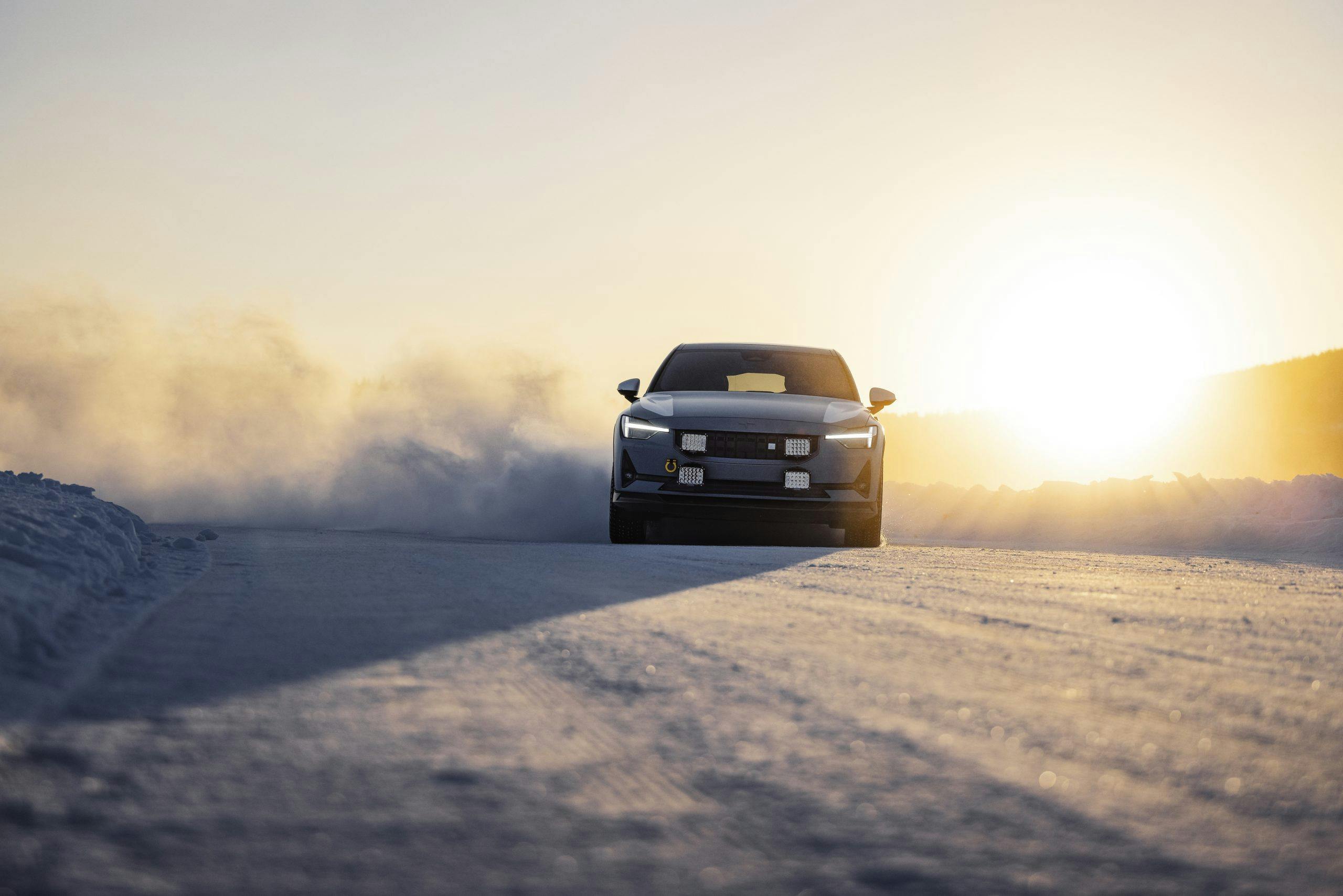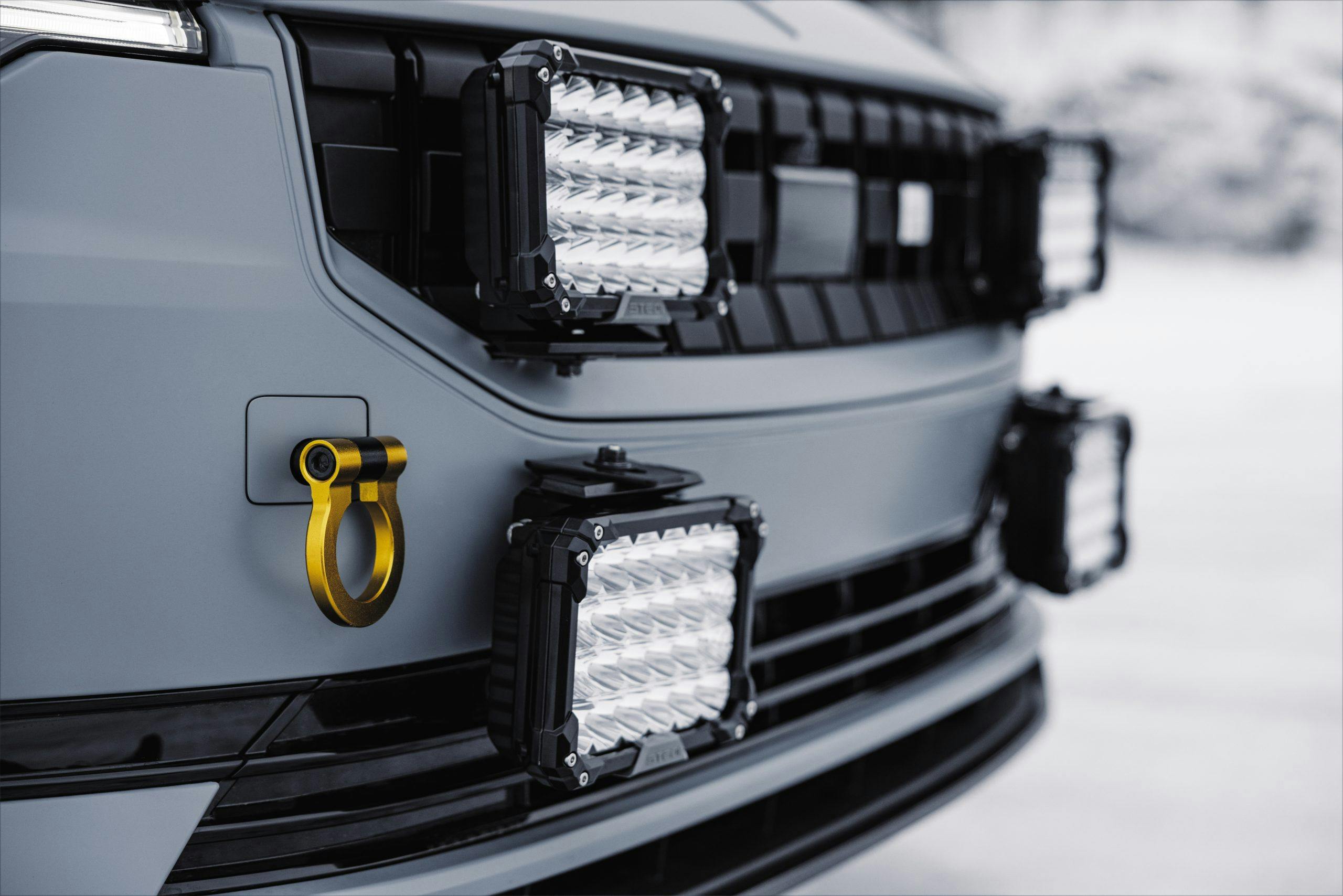Media | Articles
Polestar’s gnarly ice-racing EV, ’22 American Speed Fest to honor Peter Brock, JLR adopts Alexa
Polestar kits out a gnarly ice-racing EV … for science, not production
Intake: It’s de rigueur for Polestar to test its vehicles in genuinely arctic conditions, but apparently the company’s chief chassis engineer, ex-rally driver Joakim Rydholm, convinced the Swedish beancounters to let him build a one-off development car with some seriously sweet aftermarket kit. The resulting “Arctic Circle” build is based upon Polestar’s 2, a handsome pseudo-hatchback-crossover-coupe that follows the hybrid 1 and marks the brand’s first all-electric product. The production version comes in both single- and dual-motor versions. Rydholm naturally chose the higher-powered of the two, making sure to spec the all-wheel-drive model with the Performance Pack, headlined by a full set of manually adjustable Öhlins dual-flow valve dampers and four-piston Brembo front brakes. He then raised ride height by 1.18 inches, tuned the motors to yield 469 hp and 502 lb-ft of torque (up from 408 hp and 487 lb-ft), and set the dampers to nine clicks all around—a more compliant setup than in the production model. A set of softer springs tops off the suspension enhancements. New strut braces front the rear boost rigidity, which reaps benefits in steering responsiveness.
Of course, none of this would make sense on the ice and snow without appropriate footwear, and the Polestar 2 Arctic Circle wears custom 19-inch winter rubber spiked with 4mm metal studs. A coat of matte paint, a raft of LED lights, and a carbon-fiber skid plate comprise the final exterior touches, while the inside is spruced up with pair of custom-upholstered Recaro bucket seats … and a prototype launch-control system activated by a set of paddles behind the steering wheel.
Exhaust: These are the snow angels of a gearhead’s dreams. Here in the bleak midwinter, we can’t imagine a better cure for the blues than silently dancing about the polar ice in a kitted-out EV. Polestar is careful to point out that this “is a unique showpiece and will not be put into customer production,” but c’mon. If we make enough noise, maybe Polestar will listen …
The most beautiful book of Italian cars needs your help
Intake: Photographer Piotr Degler has spent a decade and over $120,000 of his own money to create Made In Italy, a book of 100 stunning portraits of the most iconic Italian automobiles. Degler worked with car museums as well as design studios in Italy and beyond to find the right cars for the book, and spoke to a host of automotive “Maestros” including Marcello Gandini, Giorgetto Giugiaro, Paolo Pininfarina, and Andrea Zagato. Degler is now seeking pre-orders “to cover the last steps of production.” Made in Italy is available to pre-order now for $107 at Degler’s website.
Marketplace
Buy and sell classics with confidence
Exhaust: Degler says that Made in Italy is more than just a book, it’s “a visual experience,” but you don’t need to just take his word for it. Horacio Pagani, Marcello Gandini, Falvio Manzoni, and many other legends all describe it as “beautiful.”
Peter Brock is Master of Motorsports for 2022 Festival of Speed
Intake: Automotive legend Peter Brock will be Master of Motorsports for the 2022 American Speed Festival. The event, which will celebrate the 60th anniversary of Shelby American’s impact on sports cars, is scheduled for September 29 through October 2 at M1 Concourse in Pontiac, Michigan. (For our coverage of the inaugural, 2021 event, go here.) Brock was the first employee hired by Carroll Shelby and ran Shelby’s race driving school even before Shelby American existed. In 1963, Brock turned the Shelby Cobra roadster into the slippery Cobra Daytona Coupe, which went on to win its class in the FIA’s GT World Championship in 1965. “As soon as we selected Shelby American as our featured vehicle class for this year, I immediately thought of Peter Brock,” says M1 CEO Tim McGrane. “In addition to being Carroll Shelby’s only designer, Peter made great impressions in racing with other organizations as a racer, designer and storyteller. He is one of a handful of special people who have a mastery of all angles of the motorsports industry.”
Exhaust: Peter Brock is more than just a Shelby Motorsports legend. The multi-talented designer and racer is an automotive icon whose resume includes photographer, author, speaker, and pilot. Modest and gregarious, Brock is the perfect choice to serve as this year’s American Speed Festival Master of Motorsports.
Ask Alexa anything in your Jaguar or Land Rover

Intake: Jaguar Land Rover has announced an update to its Pivi Pro or Touch Pro infotainment system that enables Amazon’s Alexa assistant. Alexa will be available on all new vehicles and sent as an over-the-air-update to 200,000 existing owners. Jaguar and Land Rover drivers will be able to voice control car systems such as navigation and audio, and control smart home devices while out on the road – as well as finding the answer to almost any question they can think of. Owners can also use Alexa to check on the state of their cars when parked.
Exhaust: For many people, having Alexa onboard should make voice control more intuitive and let them concentrate on driving. If you don’t like the idea of Amazon eavesdropping on you, then maybe skip the update—and enjoy the rather polished experience that is the Blackberry-powered Pivi Pro system.
Michigan plans to test an in-road charging system for EVs by 2023
Intake: Michigan Governor Gretchen Whitmer has announced that Israel’s ElectReon Wireless has been selected to build a public wireless in-road charging system allowing electric vehicles to charge while they are in motion. The system, which will be implemented on a one-mile section of road in Detroit, is the first of its kind in the United States. ElectReon will lead the design, evaluation, iteration, testing, and application of the pilot program, which aims to be operational in 2023. The Michigan Department of Transportation will provide $1.9 million in funding toward the project, with ElectReon contributing the remainder.
Exhaust: One of the major drawbacks of electric cars is their limited range. So, if the wireless in-road charging system is successful, the revolutionary technology could extend an EV’s charge without the driver having to stop and plug the vehicle into a charging station. That’s a step forward for proponents of zero-emissions vehicles. But there are doubters. As one Hagerty insider reasons, “These exotic solutions are expensive fixes to a problem that doesn’t exist.” Why is that? For one, the wireless method lowers charging efficiency, even as charging times at plug-in stations continue to improve. In addition, few vehicles currently on the market are designed from the factory to use the induction charging method—Hyundai’s upcoming EV60 being one of the exceptions.


































